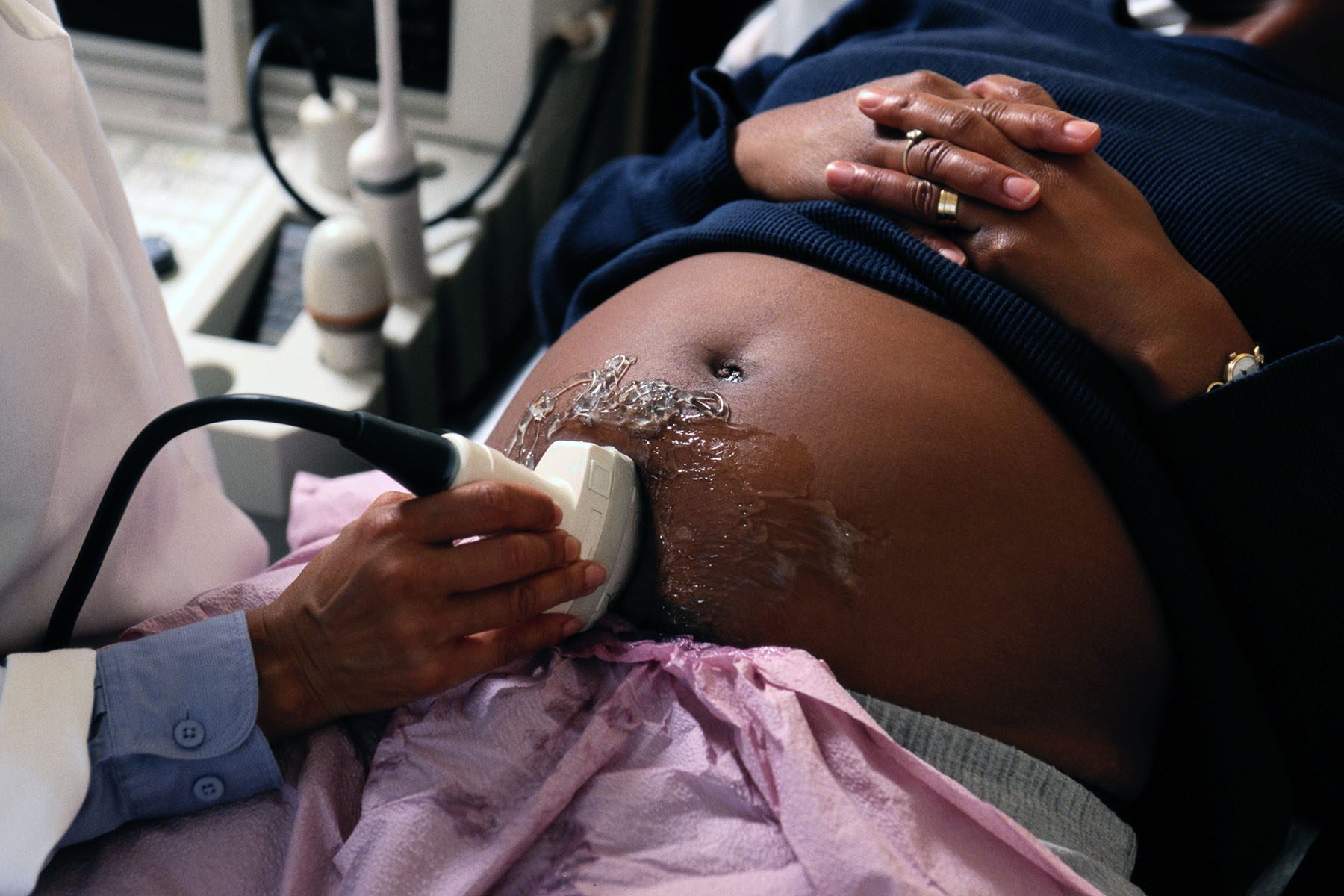According to a report released last month by the Centers for Disease Control and Prevention (CDC), over 80 percent of the pregnancy-related deaths that occurred between 2017 and 2019 were preventable. This finding is based on data compiled by Maternal Mortality Review Committees (MMRCs) — multidisciplinary boards on the state or local levels that closely review deaths that occur within a year of pregnancy.
The staggering MMRC findings show that the majority of pregnancy-related deaths occur between a week to a year postpartum, when most birthing people have already left the hospital and when many are less likely to have access to quality health care.
For Nikki Greenaway, a nurse practitioner who serves on a MMRC in Louisiana, these findings are yet another reason why the United States needs to expand how to think about care for birthing people. Greenaway created her own practice, Bloom Maternal Health, after witnessing firsthand the deadly gaps in postpartum care and how it is particularly hard for marginalized people — Black people, poor people, incarcerated people, etc. — to get quality care.
The 19th spoke to Greenaway about the crisis of pregnancy-related deaths and what she believes can be done to address disparities and save lives.
This conversation has been edited for length and clarity.
Rebekah Barber: The CDC recently released a report saying that more than 80 percent of pregnancy-related deaths could have been prevented. They found their results using data from Maternal Mortality Review Committees. Given that you serve on a committee, were you in any way surprised by these results?
Nikki Greenaway: No, not at all. We’ve been at 80 percent and above for years now. What I’m surprised at is the top things that were preventable. On a national level, looking at the conditions from a CDC standpoint, it’s mental health, it is cardiovascular and things like that, but if you’re looking at it from Louisiana, it is substance abuse, motor vehicle accidents, cardiovascular issues and homicide. All those things need to be addressed. We’re dropping the ball.
Because of these issues, because of this 80 percent preventability, everyone’s pushing for an extension of postpartum care [covered by Medicaid] — up until one year, but we don’t have enough providers. We need people to be invested in what we call “postpartum primary care” because they’re out of that initial postpartum phase. Our numbers — just like the CDC — go up to 42 days. Birthing people are typically expected to wait 42 days after birth before seeing a doctor. Especially during this period, we really have to find a way to connect with birthing people where we’re trying to save their lives.
In Louisiana, we review 13 cases at a time, and a lot of it is rural spaces where they are not privy to all of the changes in hypertension management or they don’t have that extra case manager to extend to the obstetric care. In some cases, the birthing hospital was an hour away and providers would say, “Oh, I didn’t know” updated guidance on caring for patients.
It’s really a myriad of issues. We really need to be able to increase health literacy — from a provider’s and a patient’s standpoint. How else can we tap into the way in which people learn?
That’s why so many people have gravitated toward TikTok and Instagram to get their health information. It’s really not a matter of if, it’s really a matter of what they’re getting. Health care providers have to tap into that because 90 percent of us are visual learners. If that’s the way they learn it, that’s the way we’re gonna give it, so we can really save lives.
There are reports that expanding Medicaid can help alleviate pregnancy-related deaths. Louisiana has expanded Medicaid, yet there are still extremely high pregnancy-related death rates in the state. Why do you think this disparity still exists? What do you think needs to be done to address high mortality rates even in states that have expanded health care access?
Everyone is saying expand Medicaid, but have you given guidelines for what that looks like? A provider’s going to say, “OK, it’s expanded, you can come in if you want, but I don’t really know what we’re supposed to talk about. I don’t really know what we’re looking for.” It’s not just about expanding Medicaid, but when does it start? When does that postpartum experience start? It has to start earlier than six weeks.
The states [with expanded Medicaid] that have the highest pregnancy-related death rates are states where nurse practitioners, like myself, cannot work to our full capacity. We have to be under the wing of a doctor. What if we allowed midwives to work to their full capacity?
The problem now is that OBGYNs have a very finite amount of time with patients: 15 minutes, maybe 20 minutes for an initial visit. Think about what would happen if we were to bring more people into the workforce. We wouldn’t have to run obstetric care like a puppy mill. They wouldn’t have to feel like they’re waiting for hours for 15 minutes. It shouldn’t be quantity, it should be quality. We have to improve the quality of care.
Texas, where I am now, has chosen not to share their maternal mortality results until after the election, which is unfortunate. Their numbers probably look similar to Louisiana’s, except with different top three conditions. It can’t be good.
Texas has been in the news a lot as it relates to abortion access. What do you think it means that there has been so little information around pregnancy-related deaths while at the same time there are so many efforts to restrict access to abortion?
I think this means they don’t care. I hate to sound so morbid because it’s really sad, but you can’t care.
In Houston, for instance, there is one of the biggest and largest health complexes in the world and all this vast technology, but what are you doing to save the next generation?
Why is it that folks aren’t getting quality care? The care for pregnant people here [in Texas] has been named one of the worst in the country in terms of accessing care. Medicaid is hardest to access here. It’s hard to get signed up. Why are you making it so hard, but yet you take away a person’s right to get an abortion?
It really is interesting being down here in the Bible Belt. Religion is twisted so much to make it seem like they care. They are leaning so much on religion as a way to justify their actions. As a Christian, myself, that’s just not how it works.
The CDC report found that most pregnancy-related deaths occur between one week and 43 days postpartum. It also talked about the deep racial disparities fueling this crisis. What policies do you think need to be developed to address these disparities?
It really hurt that the Momnibus Act did not pass in Congress. That really showed where priorities were, where bipartisanship was and where advocacy was. The only thing that really passed out of the Momnibus bill was the piece for veterans.
We really need to fund community-based organizations because they are the people on the ground. They are the liaisons who a person is accessing once they leave the hospital.
When we think about community-based organizations, we are thinking about places like Healthy Start, WIC [the Special Supplemental Nutrition Program for Women, Infants and Children], mental health programs, doula collectives. We are thinking about practices like mine that help marginalized communities like homeless and incarcerated pregnant people.
We need to tap into these organizations because we continue to fund huge conglomerate organizations that say they are doing the work, but they have their hands in so many other things that may be contradictory to what we are really trying to do.
If hospitals are going to classify themselves as community-based organizations where they are centering the community, they have to learn how to do community care — and not just hospital care. Not everyone is in a hospital to stay in a hospital — not everyone is sick. These families are not sick, they are there to receive care while they’re having a baby and then we need to follow them back into their communities to continue to provide the care.
We really need to stress that hospitals be more involved in the communities, really going in communities in providing care. Maybe that’s a home-based visit. Maybe that’s more community clinics that provide obstetric care in the community.
Have you seen any positive outcomes as a result of serving on the maternal mortality review board?
Yes. We recently presented a webinar out of New Orleans on opioid use and obstetric care. We’ve identified that substance abuse disorders is a condition that birthing people are dying from and we have a program in New Orleans that is for birthing folks who are experiencing substance abuse disorders. They are able to get doulas. It really is integrative care coordination with child protective services (because we know that they’re gonna be involved), with the hospitals, with community-based organizations providing case management to make sure we’re keeping the family together and saving their life. We get them on treatment to help their substance abuse disorder.
We’ve seen a home visitation program in New Orleans that allows every birthing parent to get home visits. We are trying to make sure people get blood pressure cuffs because one blood pressure cuff in a household can really change the whole house.
In this space that we navigate as community-based organizations, burnout is real — because we’re literally doing it on our own sometimes and it is often underfunded. When you invest in parents and children, it pays dividends, but you have to invest.







